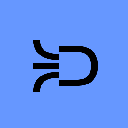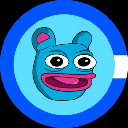-
 Bitcoin
Bitcoin $84,491.4272
0.35% -
 Ethereum
Ethereum $1,629.9188
2.22% -
 Tether USDt
Tether USDt $0.9996
0.00% -
 XRP
XRP $2.1255
-1.74% -
 BNB
BNB $584.1717
-0.14% -
 Solana
Solana $129.3048
-0.25% -
 USDC
USDC $0.9997
-0.02% -
 TRON
TRON $0.2531
0.03% -
 Dogecoin
Dogecoin $0.1604
-1.68% -
 Cardano
Cardano $0.6338
-2.36% -
 UNUS SED LEO
UNUS SED LEO $9.3913
0.02% -
 Chainlink
Chainlink $12.7602
-0.11% -
 Avalanche
Avalanche $19.9912
0.34% -
 Stellar
Stellar $0.2392
-2.25% -
 Sui
Sui $2.2195
-2.36% -
 Shiba Inu
Shiba Inu $0.0...01208
-0.23% -
 Hedera
Hedera $0.1655
-1.48% -
 Toncoin
Toncoin $2.8091
-2.20% -
 Bitcoin Cash
Bitcoin Cash $326.8962
-4.93% -
 Polkadot
Polkadot $3.7124
0.19% -
 Litecoin
Litecoin $76.2033
-3.08% -
 Dai
Dai $0.9997
-0.03% -
 Hyperliquid
Hyperliquid $15.5385
-0.46% -
 Bitget Token
Bitget Token $4.3039
0.39% -
 Pi
Pi $0.7320
-2.31% -
 Ethena USDe
Ethena USDe $0.9988
0.00% -
 Monero
Monero $212.5291
2.84% -
 Uniswap
Uniswap $5.3787
-0.07% -
 OKB
OKB $53.1970
-1.18% -
 Pepe
Pepe $0.0...07372
2.06%
How are generative art NFTs created?
Generative art NFTs blend art and tech, using algorithms to create unique digital assets that artists mint on blockchains like Ethereum for trading on NFT marketplaces.
Apr 11, 2025 at 05:21 am

Generative art NFTs have become a fascinating intersection of technology, art, and blockchain. These unique digital assets are created through a combination of artistic vision and algorithmic processes, resulting in one-of-a-kind pieces that can be owned and traded on various NFT marketplaces. Let's delve into the detailed process of how generative art NFTs are created.
Conceptualization and Artistic Vision
The journey of creating a generative art NFT begins with the artist's conceptualization. Artists start by defining the theme, style, and overall vision for their project. This stage is crucial as it sets the foundation for the entire generative process. Artists might draw inspiration from various sources, such as nature, geometry, or abstract concepts, to create a unique visual language.
During this phase, artists often sketch out initial ideas and explore different possibilities. They might use traditional drawing tools or digital software to visualize their concepts. The goal is to establish a clear direction that will guide the subsequent algorithmic processes.
Algorithm Design and Programming
Once the artistic vision is solidified, the next step involves designing the algorithms that will generate the art. This requires a deep understanding of both programming and artistic principles. Artists typically use programming languages like Python, JavaScript, or specialized tools like Processing or p5.js to create their algorithms.
The algorithm is designed to produce variations of the artwork based on a set of predefined rules and parameters. These parameters can include color palettes, shapes, patterns, and other visual elements. The artist carefully crafts the algorithm to ensure that it can generate a wide range of outputs while staying true to the original vision.
Data Input and Randomization
A key aspect of generative art is the use of randomization to create unique pieces. Artists feed the algorithm with data inputs that can be manipulated to produce different results. These inputs might include random number generators, user inputs, or even real-time data from external sources.
The randomization process ensures that each generated piece is distinct, even if the underlying algorithm remains the same. This unpredictability is what makes generative art so captivating, as it allows for endless possibilities within the defined parameters.
Rendering and Visualization
With the algorithm in place, the next step is to render the generated art. This involves translating the algorithmic output into a visual format. Depending on the chosen programming language and tools, artists might use libraries or frameworks to handle the rendering process.
The rendering stage can be computationally intensive, especially for complex artworks. Artists may need to optimize their code to ensure that the generation process is efficient. Once rendered, the artwork is typically saved as a digital file, such as a PNG or SVG, which can be further refined or edited if needed.
Minting and NFT Creation
The final step in creating a generative art NFT is minting it on a blockchain. This process involves converting the digital artwork into a non-fungible token (NFT) that can be owned and traded. Artists typically use platforms like Ethereum, Tezos, or Solana to mint their NFTs.
To mint an NFT, artists follow these steps:
- Connect to a blockchain wallet: Artists need a compatible wallet, such as MetaMask or Trust Wallet, to interact with the blockchain.
- Choose an NFT marketplace: Platforms like OpenSea, Rarible, or Foundation allow artists to mint and list their NFTs.
- Upload the artwork: The digital file of the generative art is uploaded to the chosen marketplace.
- Set metadata: Artists provide details such as the title, description, and any additional attributes that describe the artwork.
- Pay gas fees: Minting an NFT requires paying transaction fees, known as gas fees, to the blockchain network.
- Confirm the minting: Once the transaction is processed, the NFT is officially minted and added to the blockchain.
After minting, the generative art NFT is ready to be listed for sale or auction on the chosen marketplace. Buyers can then purchase the NFT, gaining ownership of the unique digital asset.
Frequently Asked Questions
Q: Can anyone create generative art NFTs, or do you need to be a programmer?
A: While having programming skills can be beneficial, it's not a strict requirement. Many artists collaborate with programmers or use user-friendly tools and platforms that simplify the process of creating generative art. Platforms like Art Blocks and fxhash offer interfaces that allow artists to focus on the creative aspects without needing to write code from scratch.
Q: How do artists ensure the uniqueness of each generative art NFT?
A: Uniqueness is achieved through the use of randomization and variable inputs within the algorithm. Each time the algorithm runs, it generates a new piece based on these variables, ensuring that no two NFTs are exactly the same. Additionally, artists can set limits on the total number of NFTs minted to maintain scarcity and value.
Q: What are the benefits of using generative art for NFTs?
A: Generative art NFTs offer several benefits, including the ability to create a large number of unique pieces from a single algorithm, which can be more efficient than creating each piece manually. They also allow for a high degree of customization and personalization, as buyers can sometimes influence the final output through interactive elements. Additionally, the algorithmic nature of generative art can appeal to collectors interested in the intersection of art and technology.
Q: How do artists price their generative art NFTs?
A: Pricing generative art NFTs can be complex and depends on various factors, such as the artist's reputation, the uniqueness of the artwork, and market demand. Some artists set a fixed price, while others opt for auctions where the price is determined by bidding. Additionally, artists might offer different tiers or editions of their NFTs, each with varying levels of rarity and price points.
Disclaimer:info@kdj.com
The information provided is not trading advice. kdj.com does not assume any responsibility for any investments made based on the information provided in this article. Cryptocurrencies are highly volatile and it is highly recommended that you invest with caution after thorough research!
If you believe that the content used on this website infringes your copyright, please contact us immediately (info@kdj.com) and we will delete it promptly.
- US President Donald Trump Issues Sharp Rebuttal to Information About "exceptions" to the Tariff Standoff with China
- 2025-04-15 00:50:13
- Mantra (OM) token recovery is the company's 'preeminent and primary concern', says CEO John Mullin
- 2025-04-15 00:50:13
- Shocked as Bitcoin Experienced a Record Decline After Trump's Tariffs Were Announced
- 2025-04-15 00:45:13
- Binance and Laser Digital Distance Themselves From Responsibility as Mantra (OM) Token Crashes 90%
- 2025-04-15 00:45:13
- Dawgz AI ($DAGZ): The Meme Coin with Real Utility Is Back and Ready to Boom
- 2025-04-15 00:40:13
- The International Monetary Fund is warning countries about an impending global recession
- 2025-04-15 00:40:13
Related knowledge
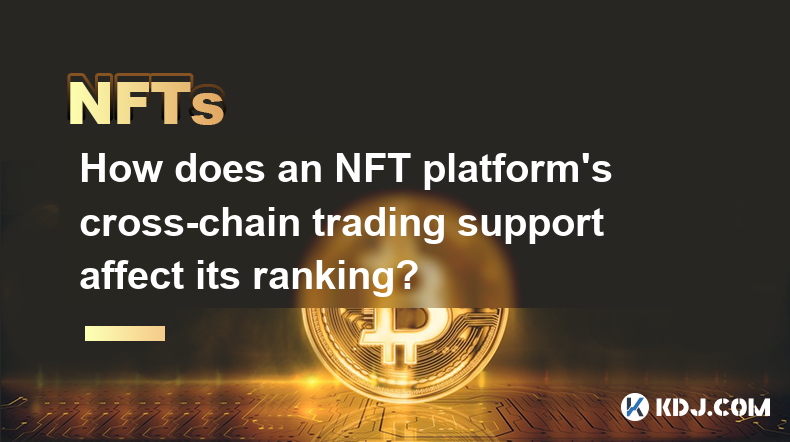
How does an NFT platform’s cross-chain trading support affect its ranking?
Apr 14,2025 at 04:49pm
The impact of an NFT platform's cross-chain trading support on its ranking is a multifaceted topic that delves into the technical capabilities, user experience, and market dynamics of the platform. Cross-chain trading refers to the ability of an NFT platform to facilitate the exchange of non-fungible tokens across different blockchain networks. This fea...
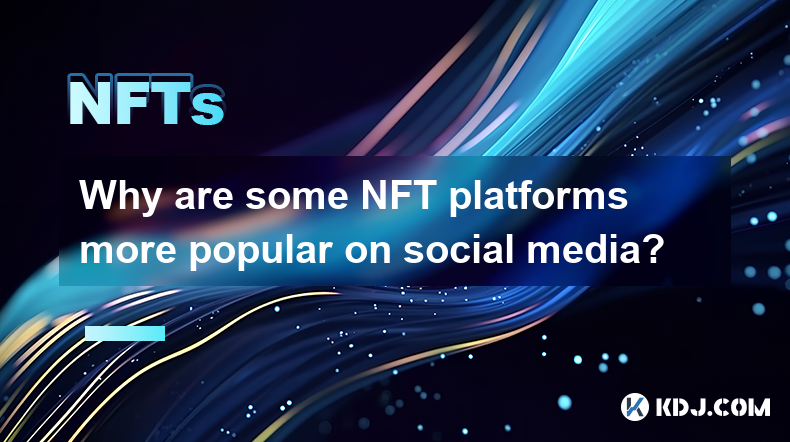
Why are some NFT platforms more popular on social media?
Apr 15,2025 at 01:00am
The popularity of NFT platforms on social media can be attributed to a variety of factors that influence their visibility, engagement, and overall appeal to users. Understanding these factors can provide insights into why certain platforms capture more attention and interaction on social media channels. User Experience and InterfaceUser experience (UX) ...

Which NFT platforms perform best in virtual land transactions?
Apr 14,2025 at 02:56pm
The NFT market has seen significant growth in virtual land transactions, with several platforms emerging as leaders in this space. Decentraland, The Sandbox, and Somnium Space are among the top performers, each offering unique features and opportunities for users. In this article, we will delve into these platforms, examining their strengths, transactio...
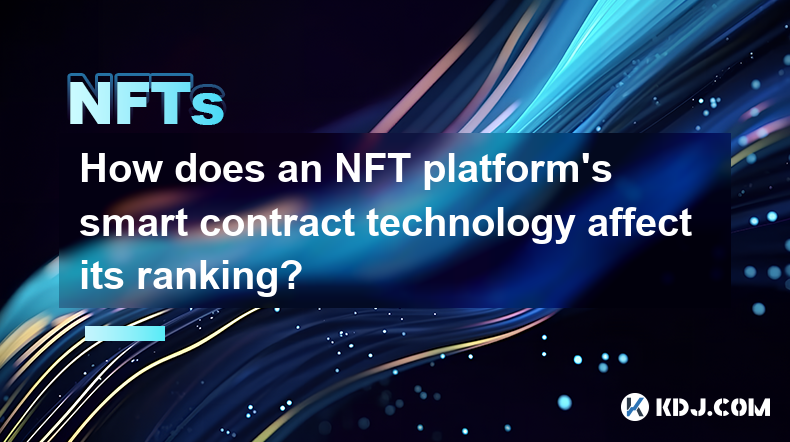
How does an NFT platform’s smart contract technology affect its ranking?
Apr 14,2025 at 11:42pm
Introduction to NFT Platforms and Smart ContractsThe world of Non-Fungible Tokens (NFTs) has seen explosive growth, with platforms like OpenSea, Rarible, and SuperRare becoming household names in the crypto space. At the heart of these platforms lies smart contract technology, which plays a crucial role in their operation and, consequently, their rankin...
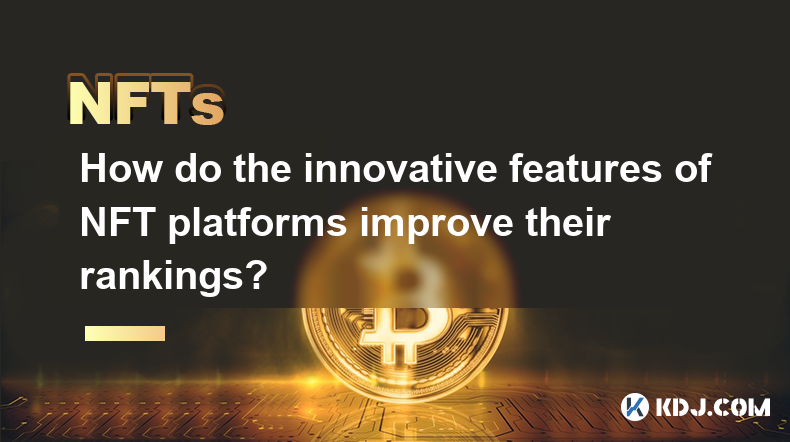
How do the innovative features of NFT platforms improve their rankings?
Apr 15,2025 at 12:42am
The world of Non-Fungible Tokens (NFTs) has seen rapid growth and evolution, leading to the emergence of numerous NFT platforms. These platforms vary widely in terms of features and functionality, which directly impacts their rankings and popularity within the cryptocurrency community. Innovative features play a crucial role in distinguishing top-perfor...
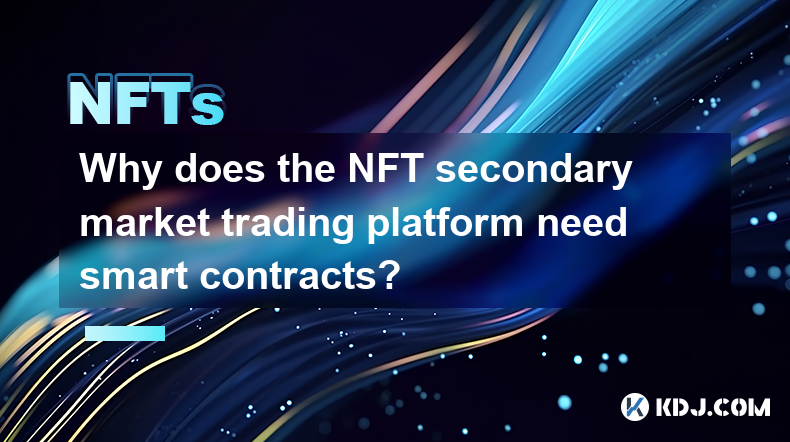
Why does the NFT secondary market trading platform need smart contracts?
Apr 14,2025 at 05:07pm
Why does the NFT secondary market trading platform need smart contracts? Non-Fungible Tokens (NFTs) have revolutionized the way digital assets are created, owned, and traded. At the heart of NFT trading platforms, especially in the secondary market, lies the crucial technology of smart contracts. This article explores the necessity and functionality of ...

How does an NFT platform’s cross-chain trading support affect its ranking?
Apr 14,2025 at 04:49pm
The impact of an NFT platform's cross-chain trading support on its ranking is a multifaceted topic that delves into the technical capabilities, user experience, and market dynamics of the platform. Cross-chain trading refers to the ability of an NFT platform to facilitate the exchange of non-fungible tokens across different blockchain networks. This fea...

Why are some NFT platforms more popular on social media?
Apr 15,2025 at 01:00am
The popularity of NFT platforms on social media can be attributed to a variety of factors that influence their visibility, engagement, and overall appeal to users. Understanding these factors can provide insights into why certain platforms capture more attention and interaction on social media channels. User Experience and InterfaceUser experience (UX) ...

Which NFT platforms perform best in virtual land transactions?
Apr 14,2025 at 02:56pm
The NFT market has seen significant growth in virtual land transactions, with several platforms emerging as leaders in this space. Decentraland, The Sandbox, and Somnium Space are among the top performers, each offering unique features and opportunities for users. In this article, we will delve into these platforms, examining their strengths, transactio...

How does an NFT platform’s smart contract technology affect its ranking?
Apr 14,2025 at 11:42pm
Introduction to NFT Platforms and Smart ContractsThe world of Non-Fungible Tokens (NFTs) has seen explosive growth, with platforms like OpenSea, Rarible, and SuperRare becoming household names in the crypto space. At the heart of these platforms lies smart contract technology, which plays a crucial role in their operation and, consequently, their rankin...

How do the innovative features of NFT platforms improve their rankings?
Apr 15,2025 at 12:42am
The world of Non-Fungible Tokens (NFTs) has seen rapid growth and evolution, leading to the emergence of numerous NFT platforms. These platforms vary widely in terms of features and functionality, which directly impacts their rankings and popularity within the cryptocurrency community. Innovative features play a crucial role in distinguishing top-perfor...

Why does the NFT secondary market trading platform need smart contracts?
Apr 14,2025 at 05:07pm
Why does the NFT secondary market trading platform need smart contracts? Non-Fungible Tokens (NFTs) have revolutionized the way digital assets are created, owned, and traded. At the heart of NFT trading platforms, especially in the secondary market, lies the crucial technology of smart contracts. This article explores the necessity and functionality of ...
See all articles




















































































